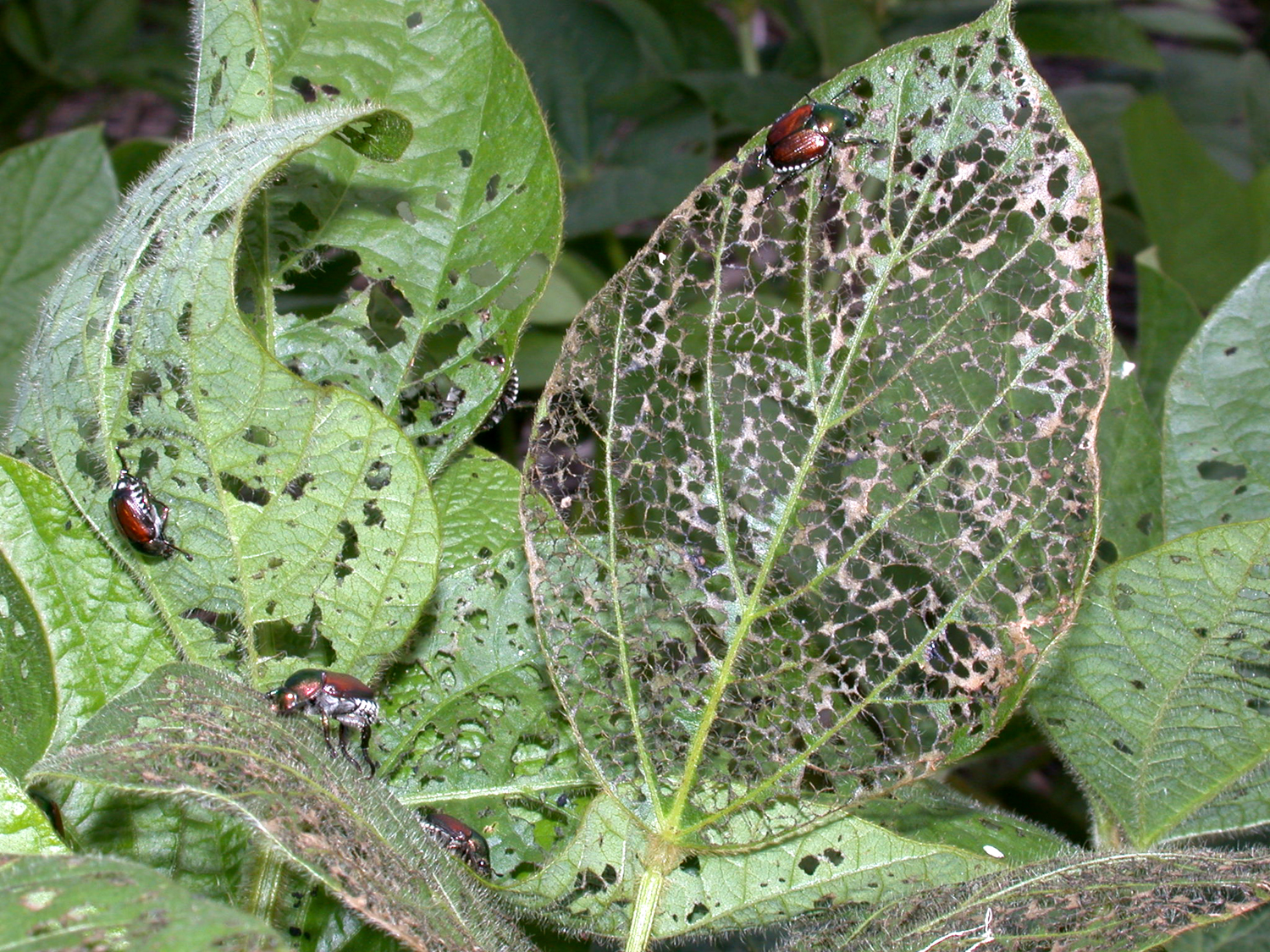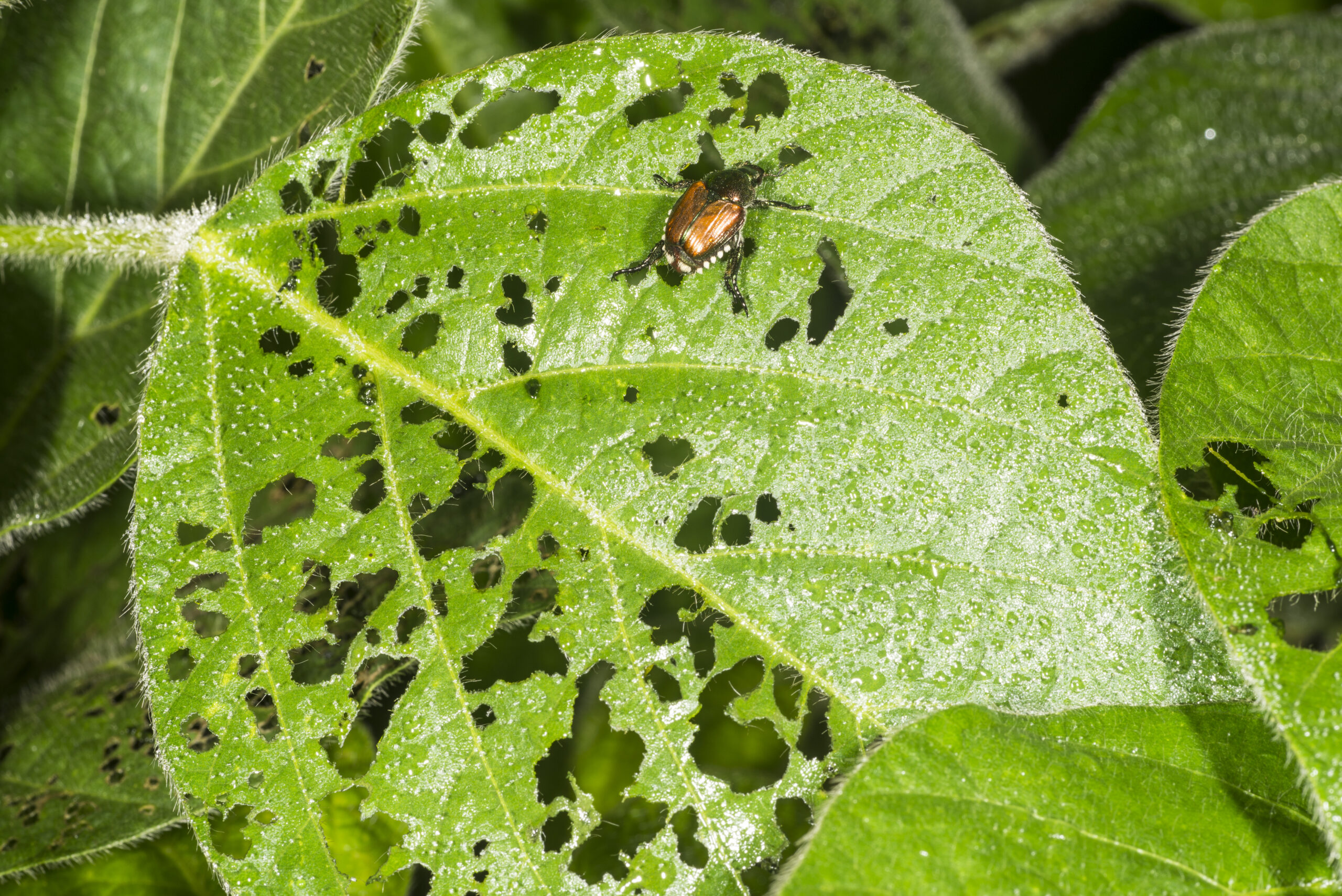Japanese Beetles (Soybean)
Popillia japonica Newman
Search the Pest & Crop Newsletter

The ability to see these full-sized life-cycle images is currently disabled to resolve an issue.
Appearance and Life History
The Japanese beetle is known to feed on over 250 different species of plants, but are especially fond of roses, grapes, smartweed, over-ripe and decaying fruit, corn silks, and soybean foliage.The Japanese beetle occasionally causes economic foliar damage to soybean, although the damage is typically far worse along edges of fields.
The adult is about 1/2 inch (13 mm) long, metallic green with bronze colored wing covers. Tufts of white hair are visible around its abdomen, just below the wing covers. The Japanese beetle larva, which is 1/4 to 1 inch (6 to 25 mm) long, resembles May/June beetle and masked chafer grubs.
The larva overwinters deep in the soil and completes its growth the following spring. The adult emerges from the ground in mid-summer and usually can be found from late June through September. Eggs are laid in the soil and hatch during July and August. The larva, which passes through three instars, feeds on live or decaying plant material in the ground until frost.
Damage
The Japanese beetle skeletonizes soybean leaves, stripping away the tissue between the larger leaf veins. Its damage resembles Mexican bean beetle feeding, however, the Japanese beetle destroys more of the smaller veins. Larvae rarely damage soybean roots, feeding primarily on decaying plants and roots of some weed species.
Sampling Method
- Necessary only if large numbers of Japanese beetle are found in a field with noticeable defoliation.
- 20 sweeps with a sweep net in each of 5 field areas
- Record the number of beetles found in each area (Japanese beetles are usually not uniformly distributed throughout a field).
- Determine the percentage defoliation level for individual plants in each sampling area and estimate the average percentage defoliation level for the field as a whole.
Management Guidelines
Soybean Insect Control Recommendations: E-series 77-W (PDF)
Consult the following table taking into consideration:
- Whether the number of beetles present is increasing, decreasing, or appears constant
- The average defoliation level for the entire field (not just field margins)
- The presence of other insect defoliators
Prebloom to Full Bloom (stages V1 to R2): greater than 30% defoliation. Beginning pod to
beginning seed (stages R3-R5): greater than 10% defoliation. Full seed (stage R6): greater than
15% defoliation with beetles or larvae actively feeding.




